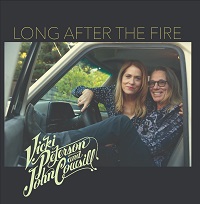| JWhen singer/songwriter Judee Sill died at the age of 35,
she had issued two albums under her own name on David Geffen's Asylum label
in 1971 and 1973, respectively. (Both have since been re-released with bonus
material by Rhino's web-only Handmade imprint.) She had another one more
or less in the can, recorded in 1974, but it was never finished or released.
Her brand of folk music was enigmatic, full of light breeziness, nicely
orchestrated (she wrote the charts herself), and drenched in a natural world
mysticism that was more ethereal than the standard California fare of the
early '70s. Dreams Come True is that lost third album, produced by Bill
Plummer and track engineered by Emitt Rhodes, with the finished mix done
by Jim O'Rourke in 2004, 30 years after the album was shelved. Water Records,
quickly becoming the obscurantist's reissue label, has put together a lavishly
presented package that houses Dreams Come True, bonus tracks in the form
of demos and rehearsals, and a second disc entitled "Lost Songs,"
recorded by Tommy Peltier in his home studio and in his living room, which
includes nine unreleased tracks and a 12-minute QuickTime movie of Sill
performing in concert. The musical -- and production -- quality on Dreams
Come True is high, given that it was recorded in a professional studio.
Sill had been fully in possession of her muse when making it. Sill and Art
Johnson did the musical charts, and she and Marc McLure arranged the vocals.
Those familiar with her first two offerings will find this to be deeper
in the vein, fleshed out, more focused. Sill could write hooks as well as
she could write words, and these tracks, particularly "That's the Spirit,"
"The Living End," and "Til Dreams Come True," are moving
emotionally, while not being at all mopey. They are jaunty and full of a
sun-drenched airiness that stood out, even when the subject matter -- as
spiritual as much of it was -- was melancholy. Sill never beat a lyric of
a tune over the head. Disc two is, naturally, much rougher. This is for
the fans, the hardcore devotees who feel there was never enough out there.
Some of these tunes have appeared in various guises on the Internet, but
these versions are cleaner, though there are almost no credits for the other
musicians on the sessions. "Dead Time Bummer Blues" is a fully
realized outing, while "Sunny Side Up Luck" is barely a sketch.
The stunner on the set is the acoustic home recording of "Emerald River
Dance." Its starkness and unpolished beauty are intoxicating, and give
the listener a true portrait of the artist in an intimate environment. The
package is lavish -- the CDs are in an envelope-folded slipcase and the
72-page book contains interviews with the artist, friends, family, and acquaintances,
offering a deeply troubling and even heartbreaking slice of biography that
underscores just how remarkable Sill's music was in lieu of her life circumstances.
This is a treasure.
( by Thom Jurek , All
Music Guide)
|

 Plattentipp
Plattentipp 






